No products in the cart.
ACCOUNTING
 Loading...
Loading...
Introduction to Data Analytics for Accounting 1st Edition By Vernon Richardson and Katie Terrell and Ryan Teeter 2021 edition Solution manual
Introduction to Data Analytics for Accounting 1st Edition By Vernon Richardson and Katie Terrell and Ryan Teeter 2021 edition Solution manual
College Algebra
( Solution manual)
Introduction to Data Analytics for Accounting 1st Edition By Vernon Richardson and Katie Terrell and Ryan Teeter 2021 edition Solution manual
Introduction to Data Analytics for Accounting
edition :1st Edition
Author Name: Vernon Richardson and Katie Terrell and Ryan Teeter
contact:
Whatsapp +1 (949) 734-4773
for the Facebook page click here
for more books for ( Test Bank and Solution Manual) click here
for Test bank click here
 Loading...
Loading...
$35.00 $50.00
Introduction to Data Analytics for Accounting 1st Edition By Vernon Richardson and Katie Terrell and Ryan Teeter 2021 edition Solution manual
College Algebra
( Solution manual)
Introduction to Data Analytics for Accounting 1st Edition By Vernon Richardson and Katie Terrell and Ryan Teeter 2021 edition Solution manual
Introduction to Data Analytics for Accounting
edition :1st Edition
Author Name: Vernon Richardson and Katie Terrell and Ryan Teeter
contact:
Whatsapp +1 (949) 734-4773
for the Facebook page click here
for more books for ( Test Bank and Solution Manual) click here
for Test bank click here
Chapter 1 End-of-Chapter Assignment and Lab Solutions
Multiple Choice Questions
- (LO 1-2) Which is the lowest level of skills in Bloom’s Taxonomy?
- Create
- Remember
- Apply
- Analyze
- (LO 1-2) Which is the highest level of skills in Bloom’s Taxonomy?
- Create
- Apply
- Analyze
- Understand
- (LO 1-2) Which is the appropriate ordering of skills in Bloom’s Taxonomy, where the “>” symbol means higher order skills?
- Remember > Apply
- Apply > Analyze
- Analyze > Evaluate
- Create > Analyze
- (LO 1-3) Which component of the AMPS model most appropriately addresses the axiom, “Your data won’t speak unless you ask it the right data analytics questions”?
- Ask the Question
- Master the Data
- Perform the Analysis
- Share the Story
- (LO 1-3) Which component of the AMPS model most appropriately addresses the question of the best way to communicate data analytics findings with a decision maker?
- Ask the Question
- Master the Data
- Perform the Analysis
- Share the Story
- (LO 1-3) What type of question is predicting whether a company will go bankrupt in the coming two years?
- What happened? What is happening?
- Why did it happen? What are the root causes of past results?
- Will it happen in the future? What is the probability something will happen? Is it forecastable?
- What should we do based on what we expect will happen? How do we optimize our performance based on potential constraints?”
- (LO 1-3) What type of question is choosing to take certain tax deductions based on the way managers believe tax legislation will change in the near future?
- What happened? What is happening?
- Why did it happen? What are the root causes of past results?
- Will it happen in the future? What is the probability something will happen? Is it forecastable?
- What should we do based on what we expect will happen? How do we optimize our performance based on potential constraints?”
- (LO 1-3) What type of question is finding the detail to more clearly understand why net income is decreasing when revenues are increasing?
- What happened? What is happening?
- Why did it happen? What are the root causes of past results?
- Will it happen in the future? What is the probability something will happen? Is it forecastable?
- What should we do based on what we expect will happen? How do we optimize our performance based on potential constraints?”
- (LO 1-3) What type of question is determining how much a company paid for state and federal income tax?
- What happened? What is happening?
- Why did it happen? What are the root causes of past results?
- Will it happen in the future? What is the probability something will happen? Is it forecastable?
- What should we do based on what we expect will happen? How do we optimize our performance based on potential constraints?”
- (LO 1-3) A ______________ might be used to evaluate which journal entries are outliers.
- regression analysis
- Benford’s law analysis
- histogram
- sum function (Excel SUM())
Discussion Questions
- (LO 1-1) The computer is better at automated, repetitive tasks since it can be programmed. The computer is also not subject to fatigue and can process massive amounts of data easier than a human can. Most of the value-added tasks and higher order thinking skills, such as analyzing, evaluating and creating, are performed better by human accountants because they are not easily programmed by a set of fixed rules. The ability to recognize tradeoffs, evaluating alternatives, and evaluating ad hoc facts are all better performed by humans.
(LO 1-2) The skills taught in the introduction to financial accounting were the lower order thinking skills (noted in Bloom’s Taxonomy) such as remembering, understanding and applying. Application of journal entries, computing trial
 Loading...
Loading...

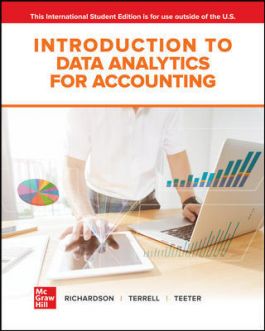
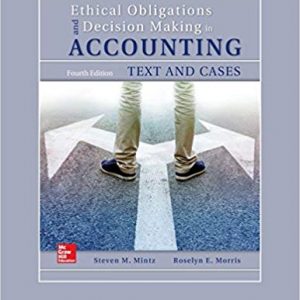
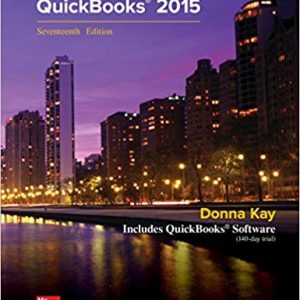
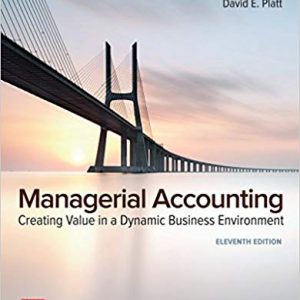
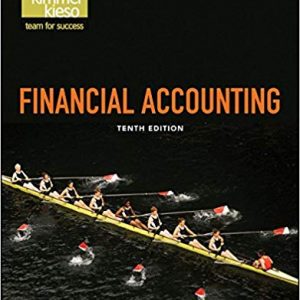

John (verified owner) –
Good thank you
John –
Camden (verified owner) –
Very well worth the money.
Camden –